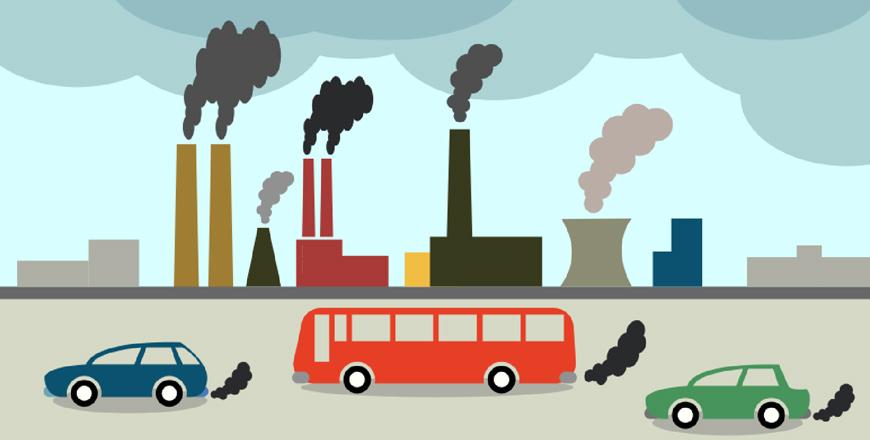You are here
Even brief exposure to low-level air pollution tied to deaths
By Reuters - Dec 28,2017 - Last updated at Dec 28,2017

Photo courtesy of pri.org
Older adults are more likely to die on days when air pollution rises, even when contaminant levels are below the limit considered safe by US regulators, a new study suggests.
Researchers looked at 22 million deaths nationwide to see if there was any connection between fatalities and fluctuations in daily concentrations of ozone, an unstable form of oxygen produced when pollution reacts with sunlight, and so-called PM 2.5, tiny particles that include dust, dirt, soot and smoke.
Most of the deaths in the study occurred on days when ozone and PM 2.5 levels were below the limits set by the US Environmental Protection Agency (EPA).
Previous studies have linked air pollution to an increased risk of chronic health problems and premature death, but those studies focused on cities, said study co-author Joel Schwartz of the Harvard T.H. Chan School of Public Health in Boston.
“So we did not know if the same association held in small cities, towns, or rural areas, where pollution levels are lower,” Schwartz said by e-mail. “Now we have them all, so we know that it does apply everywhere, not just in big cities.”
The study focused on deaths from 2000 to 2012 for people in more than 39,000 ZIP codes nationwide who were insured by Medicare, the US health programme for the elderly and disabled.
Researchers compared satellite data on daily PM 2.5 and ozone levels on the days people died in specific ZIP codes to air quality levels on another day within a week or two of each fatality.
EPA standards cap 24-hour PM 2.5 at 35 micrograms per cubic metre of air (ug/m3) and 8-hour ozone at 70 parts per billion (ppb).
During all of the days examined in the study, 94 per cent had PM 2.5 levels below 25 ug/m3, and 95 per cent of the deaths occurred on these days, the study found.
At the same time, 91 per cent of the days examined had ozone levels below 60 ppb, and 93 per cent of the deaths occurred on these days.
Even when air quality still met EPA standards, each 10 ug/m3 daily increase in PM 2.5 levels was associated with an increase of 1.42 deaths per day for every million people, the researchers report in the Journal of the American Medical Association. Each 10 ppb increase in daily ozone levels was associated with 0.66 more deaths for every million people.
The increased risk of death associated with daily spikes in PM 2.5 and ozone levels persisted even when researchers restricted their analysis to days when the air quality complied with EPA standards.
Among other things, breathing polluted air can worsen existing respiratory conditions, such as asthma or chronic obstructive pulmonary diseases, said Griffith Bell, a researcher at the Eunice Kennedy Shriver National Institute for Child Health and Human Development in Bethesda, Maryland.
Beyond a lack of data on young people, another limitation of the study is the lack of data on the long-term air pollution exposure, the authors note.
Still, people should be aware of the health effects of air pollution even when they do not live in urban areas where traffic and smog may be well-known health risks, said Junfeng Zhang, author of accompanying editorial and an environmental health researcher at Duke University in Durham, North Carolina.
Related Articles
Women who breathe polluted air during pregnancy may be more likely to have children who develop high blood pressure, a US study suggests.Res
The more exposure people have to air pollution, especially ozone, the more lung damage they develop over time, a US study suggests. Res
People exposed to even low levels of air pollution are more likely to develop structural changes in the heart that can be a precursor to hea


















